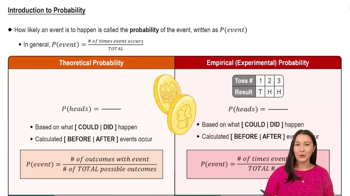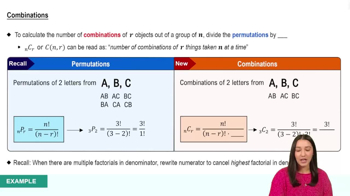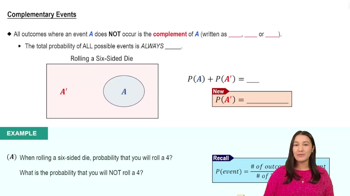Here are the essential concepts you must grasp in order to answer the question correctly.
Probability
Probability is a measure of the likelihood that a particular event will occur, expressed as a number between 0 and 1. In this context, it helps determine the chances of selecting a certain number of non-defective disks from a pack. Understanding basic probability principles, such as combinations and the complement rule, is essential for solving problems involving random selections.
Recommended video:
Introduction to Probability
Combinations
Combinations refer to the selection of items from a larger set where the order does not matter. In this scenario, we need to calculate how many ways we can choose non-defective disks from the total available. The formula for combinations, denoted as C(n, k) = n! / (k!(n-k)!), is crucial for determining the number of successful outcomes in probability calculations.
Recommended video:
Complement Rule
The complement rule in probability states that the probability of an event occurring is equal to 1 minus the probability of it not occurring. In this question, calculating the probability of selecting at least three non-defective disks can be simplified by first finding the probability of selecting fewer than three non-defective disks and subtracting that from one. This approach often makes complex probability problems more manageable.
Recommended video:






